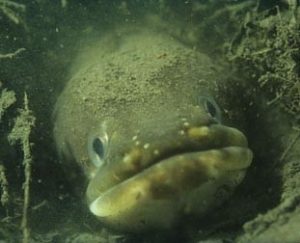
European Eel (Anguilla anguilla) (Source: Flickr)
The European eel (Anguilla Anguilla) is considered a highly endangered species in the wild and new research suggests that this could be largely due to illicit drug residues such as cocaine that is found in surface waters around the world.
Anna Capaldo, a research biologist at the University of Naples Federico II studies the effects of trace concentrations of cocaine on the European eel. She reports that the eels are extremely vulnerable to low concentrations of cocaine, especially during adolescence as the cocaine can cause fluctuations in hormone levels, which can further result in major physiological impacts such as muscle swelling.
How Does Cocaine Enter the Water?

Cocaine (Source: Flickr)
Treated wastewater is the primary source of these cocaine residues in the water. Cocaine does not absorb well in the human body as it continuously cycles through the bloodstream to various organs such as the heart and brain, until it can finally be broken down and excreted by the body. Moreover, cocaine breaks down rather quickly in the body, as it has a half-life of roughly one hour. This means that after one hour, half of the cocaine in the body will be eliminated from the body, primarily through urine and feces. These cocaine-laced excretions end up in wastewater and ultimately makes it way into rivers, oceans and other bodies of water. Millions of individuals illegally abuse cocaine, which is a primary reason why these residues are found in surface waters around the world.
Can Cocaine Get Eels High?
In short, yes.
Small concentrations of cocaine is found to increase dopamine levels, a hormone responsible for providing feelings such as pleasure.
More concerning, however is that the cocaine increases a stress hormone called cortisol. Cortisol is responsible for inducing fat consumption, which can be detrimental for the European eel as it can significantly delay their timing for migration, as the eels must build up enough fat in order to successfully complete their journey to sea.
Solutions and Future Research
Research shows that cocaine residues in the water is a clear threat to susceptible species in the aquatic environment such as the European eel.
So what can been done to stop this?
Simple.
Stop people from using illegal drugs such as cocaine in the first place!
Easier said than done. The sad reality is that governments around the world have been trying to accomplish this for decades, so maybe there is a better solution.
As of now, little is known about the distribution pattern, occurrence and ecological impacts of cocaine residues in surface waters and even drinking water and wastewater. However, it is clear that these drug residues are a major threat to susceptible species such as the European eel. Thus, more research must be done on the worldwide prevalence of these cocaine residues and their potential effects on the environment, in order to determine whether it is appropriate to spend resources and implement regulations regarding the occurrence of these drugs in wastewater.

(Source: Flickr)
Or, instead of doing all that tedious research, people can start following the law by not consuming illegal drugs and stop excreting their cocaine-laced defecate and urine into the water!
Written by Justin Kim

2 responses to “Can Eels get High on Cocaine?”